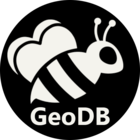So... until my new job starts in October, I have some time to kill! I'd love to build a useful custom transformer or format and share it on FME Hub, but the problem is: I'm out of ideas...
Do you have an idea for a transformer/format that would really be helpful to the community? So not something that only applies to your unique situation, but can be used by everyone? Post it below and who knows... it might appear on FME Hub the next coming weeks! Your name will be mentioned of course :)














